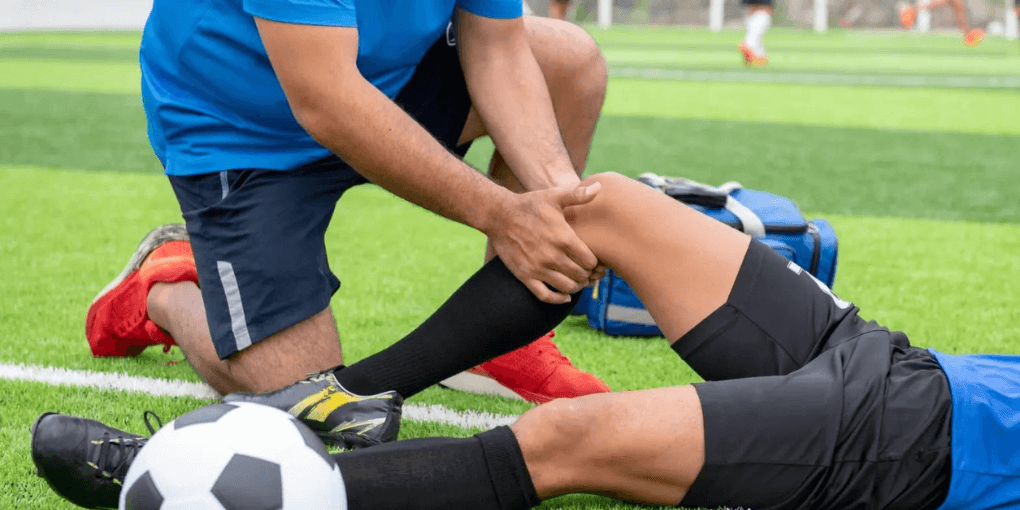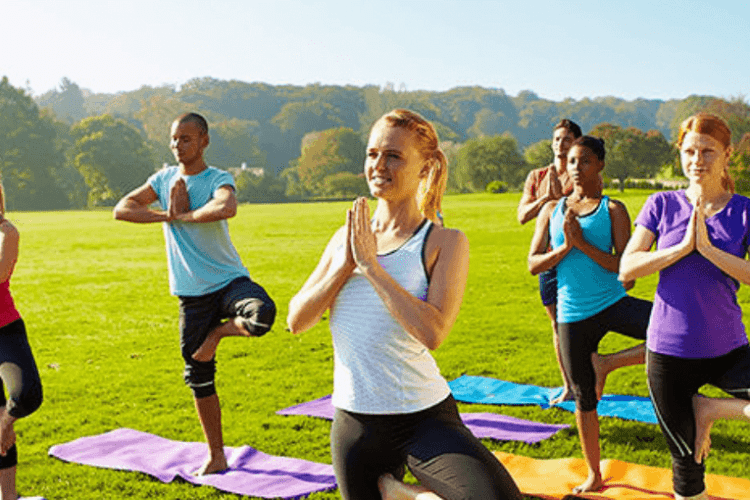Soccer Cleats and Sports Medicine: How Foot Health Affects Gameplay
Have you ever wondered how your soccer cleats can impact your gameplay and foot health?
As a soccer fan myself, I’ve experienced how much the right cleats can change your game.

Did you know that, according to sports medicine experts, proper footwear can reduce the risk of foot injuries by up to 60%?
Soccer star Lionel Messi once said that good shoes are like magic on the field. They help him run faster, kick better, and avoid injuries.
In this blog post, we’ll dive into the fascinating world of soccer cleats and sports medicine. We’ll explore how foot health directly influences your performance on the soccer field.
So, are you excited to kick off this adventure? Let’s score some knowledge goals together!
Learn The Anatomy of the Foot
Understanding the anatomy of your feet is crucial for playing safely and effectively. When you wear the right cleats, it helps keep your feet happy and ready to score goals on the field.
- Bones: The foot has many small bones that work together like a puzzle to help you walk, run, and play soccer. These bones include the toes, the long bones in the middle, and the bones in the back.
- Muscles and Tendons: Muscles are like rubber bands that help you move your feet and toes. Tendons work as strong ropes that link muscles and bones together. It helps you kick the soccer ball and move your feet quickly.
- Ligaments: Ligaments are stretchy bands that hold your bones together. It gives your feet the stability and support they need to play soccer.
- Arch: Your feet have arches, which are curves on the bottom that act like shock absorbers when you run and jump. Arch support is important to keep your feet strong and prevent injuries during games.
- Nerves: Nerves in your feet send messages to your brain. It notifies you if something hurts or if you need to move quickly. They help you stay balanced and aware of your surroundings on the soccer field.
- Skin and Toenails: The skin on your feet protects them from getting hurt and keeps them healthy. Toenails also help protect your toes. You should cut them regularly to prevent any discomfort.
Importance of Choosing the Right Soccer Cleats
According to a study by ResearchGate, wearing the right soccer cleats can improve player performance.
That’s why sports medicine experts always suggest to choose the perfect soccer cleats for you.
- Proper Fit: Soccer cleats that fit you well prevent blisters and discomfort while playing. Too tight or too loose cleats can cause pain and affect how you run and kick the ball.
- Support: The right cleats provide good support for your arches and ankles. It reduces the risk of injuries. They also help you stay balanced and stable on the field. So, you can control the ball better than before.
- Traction: Cleats with the right traction help you grip the ground and avoid slipping. It helps you, especially on wet or muddy fields. This lets you change direction quickly and make sharp turns while playing soccer.
- Comfort: Comfortable cleats make playing soccer more enjoyable. It prevents foot fatigue during long matches or practices. So, your cleats should have cushioning and breathable materials to keep your feet cool and dry.
- Durability: Good-quality cleats last longer. They’re worth investing in because they last longer than cheap or low-quality cleats.
- Playing Surface: Different cleats are designed for different playing surfaces. For example, there are cleats for grass, turf, or indoor courts. Choosing the right cleats for the surface you play on helps you move smoothly and perform at your best.
What Are the Common Foot Problems in Soccer?
Let’s explore some common foot problems in soccer:
Blisters
Blisters are sore bubbles that form on your feet due to friction caused by ill-fitting or new cleats.
They can be painful and make it uncomfortable to play or walk. So, it’s important to wear properly fitted cleats.
Sprains
Sprains happen when you twist or roll your ankles. It often happens during sudden changes in direction or for landing awkwardly. Wearing cleats with good ankle support can help prevent sprains.
Plantar Fasciitis
Plantar fasciitis makes the tissue on the bottom of your feet inflamed and causes heel pain. It may happen for wearing cleats that don’t provide enough arch support.
Ingrown Toenails
It occurs when the edges of your toenails grow into the skin. It leads to pain and a possible infection.
By keeping your toenails short and wearing cleats with enough room for your toes, you can prevent this problem.
Achilles Tendonitis
Achilles tendonitis occurs when the tendon connecting your calf muscles to your heel bone becomes inflamed. It can cause pain and discomfort at the back of the ankle.
Turf Toe
Turf toe is often caused by repetitive pushing off the ground or sudden stops. It can lead to pain, swelling, and limited movement in the toe. Cleats with proper toe protection and flexibility can reduce the risk of turf toe.
So, it’s important to listen to your body and take care of your feet to prevent these foot problems. while playing soccer.
Know the Sports Medicine Techniques for Foot Injuries
Dr. Mark Price, a sports medicine specialist, advises players to take care of their feet in soccer. He said that by addressing foot problems early, you can prevent serious foot injuries.
Understanding sports medicine techniques for foot injuries is crucial for you. By following these techniques, you can ensure a speedy recovery and enjoy the thrill of soccer.
- R.I.C.E. Method:
- Rest: Take a break from playing and allow the foot to heal.
- Ice: You can apply ice packs to reduce swelling and pain.
- Compression: You can use bandages or wraps to support the injured foot.
- Elevation: Keep the foot elevated above heart level to reduce swelling.
- Stretching and Strengthening Exercises:
- Stretching helps improve flexibility and reduce the risk of foot injuries.
- Strengthening exercises target the muscles in the feet and ankles. It provides better support and stability for your feet.
- Foot Taping:
- You can use special tapes to support and stabilize the foot while running and jumping.
- This can help prevent sprains and provide extra protection to injured areas.
- Orthotics and Insoles:
- Custom shoe inserts support different foot problems, like flat feet or high arches.
- Orthotics can improve foot alignment and reduce the risk of overuse injuries.
- Physical Therapy:
- You can work with a physical therapist to do exercises and treatments for foot injuries.
- Physical therapy helps you improve your range of motion, strength, and foot health.
- Ultrasound and Laser Therapy:
- Advanced treatments like ultrasound waves or laser technology are used to reduce inflammation.
- It also helps in the healing process.
- Pain Management Techniques:
- You can take pain-relieving medications or apply topical creams to the injured area.
- It can help reduce discomfort and support the healing process.
The Role of Sports Medicine in Soccer Foot Care
Let’s explore the role of sports medicine in soccer foot care:
- Injury Prevention: It helps you learn how to prevent foot injuries. It teaches you proper exercises and techniques to keep your feet safe while playing.
- Foot Assessments: Sports experts check your feet to see if you’re healthy and strong. They look for any problems and advise on how to take better care of your feet.
- Customized Treatment Plans: If you get hurt, sports professionals create a special plan to help your foot heal. The plan might include exercises, therapy, or even special types of equipment.
- Rehabilitation: After an injury, these experts help you recover and get back on the field. They teach you exercises to make the foot stronger and help it heal faster.
- Foot Health Education: It also teaches you about the importance of foot care. You can learn how to choose the right cleats, do foot stretches, and keep your feet clean and healthy.
- Support and Guidance: Sports professionals are there to support you and answer your questions about foot care. They give advice on how to stay safe and play your best without hurting your feet.
What is The Role of Footwear Technology in Soccer?
Neymar Jr once said, “The technology in my cleats helps me perform at my best.”
So, if you understand how footwear technology plays a vital role in soccer, you can choose the right cleats for your game.
- Grip and Traction: Soccer cleats use special materials and designs on the sole to grip the ground. This helps you run, stop, and change direction without slipping.
- Support and Stability: Cleats have built-in support for the arches and ankles to keep feet stable. This reduces the risk of injuries like sprains and helps you stay balanced.
- Cushioning and Comfort: Cleats have cushioned insoles and padding to make them comfortable to wear. Comfortable cleats help you focus on the game without worrying about sore feet.
- Breathability: Cleats are made with breathable materials to keep feet cool and dry during the game. This prevents sweat and reduces the risk of blisters and discomfort.
- Durability: Soccer cleats are designed to resist tough playing conditions and last a long time. They’re made with strong materials that can handle running, kicking, and playing on different surfaces.
- Customization: Some cleats allow you to customize them with different colors or designs. This lets you express your style while wearing comfortable and functional footwear.
- Technology Enhancements: Cleats may have advanced technologies like shock absorption or energy return. These can improve your performance on the field. These features also help you run faster, jump higher, and play better.
Learn the Tips for Maintaining Foot Health
By following these tips, you can maintain good foot health and enjoy playing soccer:
Wear the Right Cleats
You should choose cleats that fit well and provide good support for your feet. Properly fitted cleats can prevent blisters, discomfort, and injuries.
Warm-Up and Stretch
Before playing soccer, you need to do warm-up exercises and stretch your feet, ankles, and legs. This helps prevent muscle strain and prepares your feet for physical activity.
Cool Down After Playing
After playing soccer, take time to cool down and stretch your muscles again. Cooling down helps prevent soreness and promotes faster recovery.
Practice Good Hygiene
After playing sports or sweating, make sure to keep your feet clean and dry. Dry feet help prevent fungal infections and discomfort.
Trim Your Toenails
You must regularly trim your toenails to avoid ingrown toenails and discomfort. Properly trimmed toenails also prevent injuries while playing soccer.
Stay Hydrated
Staying hydrated is important, so you must drink plenty of water. It helps keep your muscles and feet healthy. Hydration is important for overall foot health and performance.
Listen to Your Body
You should pay attention to any pain or discomfort in your feet while playing soccer. If something doesn’t feel right, take a break and consult with a sports medicine professional.
Get Regular Check-Ups
Visit a doctor for regular check-ups on your foot health. Regular check-ups help find out any issues early and keep your feet in top condition.
Conclusion
To sum up, in the world of soccer, sports medicine plays a role in keeping your feet strong and healthy on the field.
Taking care of your feet is as important as practicing your skills on the field.
Understanding how healthy feet and proper cleats can affect your game helps you take care of your feet and play better.
So, listen to your body, practice good foot hygiene, and follow the tips you’ve learned here. It’ll keep your feet happy and ready for the next game!
FAQs
If your cleats hurt your feet, try adjusting the laces. You can also try wearing thicker socks for added cushioning.
Yes, there are different types of cleats for various playing surfaces. For example, turf, indoor courts, and even street soccer. So, you must choose the right cleats for the surface you'll be playing on for better performance.
They help soccer players prevent and treat foot injuries. They guide proper footwear, injury prevention techniques, and rehabilitation exercises to keep feet healthy and strong.
It's best to replace your cleats every season or when they show signs of wear and tear. Worn-out cleats may not provide enough support and can increase the risk of injuries.


